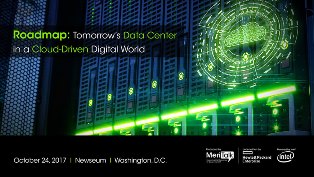
With the new focus on innovation in Federal IT, agency CIOs said they will modernize whether they like it or not.
The White House released in May its Cybersecurity Executive Order, and in August its IT Modernization report, which push for agencies to move to the cloud and use shared services in order to save money on IT services. Also, the National Archives and Records Administration announced that it will require agencies to make their data searchable online by 2019.

The increased conversations about modernization have changed the way agency CIOs talk to their leadership about IT, according to Pamela Dyson, CIO of the Securities and Exchange Commission (SEC).
“We have to be able to migrate those systems on tight budgets,” Dyson said at FCW’s IT Modernization Summit on Oct. 11. “IT budgets are shrinking while the cyber threat landscape is growing.”
Dyson said that SEC has been able to find a way to save $5 million this year on regrouping its data sets. SEC spends $170 million a year on data maintenance. The agency found that many of its data sets are duplicative. The IT team is looking for an enterprise data management solution that gets rid of those silos, which led them to the cloud.
“Our cloud strategy really overlaps with that modernization strategy,” Dyson said.
State Department CIO Frontis Wiggins said that the agency used to have a rule that prevented him from migrating five types of highly sensitive data to the cloud. Now the rule has been changed to allow sensitive data on the cloud if it’s protected by the right security controls.
“When we talk about putting classified information in the cloud, that makes me kind of nervous,” Wiggins said. “If we put that data in the cloud and it gets compromised, I’m going to be looking for a job.”
However, this shift to the cloud is necessary to save money and streamline processes, according to Wiggins.
“Modernization is going to happen whether we plan for it or not,” said Ron Bewtra, chief technology officer of the Department of Justice (DOJ).
Bewtra said that DOJ has begun to think about how to use shared services effectively and how to work with a larger system architecture. Bewtra said that one of the important factors in making this work is making the Federal government networks interoperable.
“Every year you should be better off than you were before,” Bewtra said. “This mantra that we’re going to wait for the next major project is unacceptable.”
